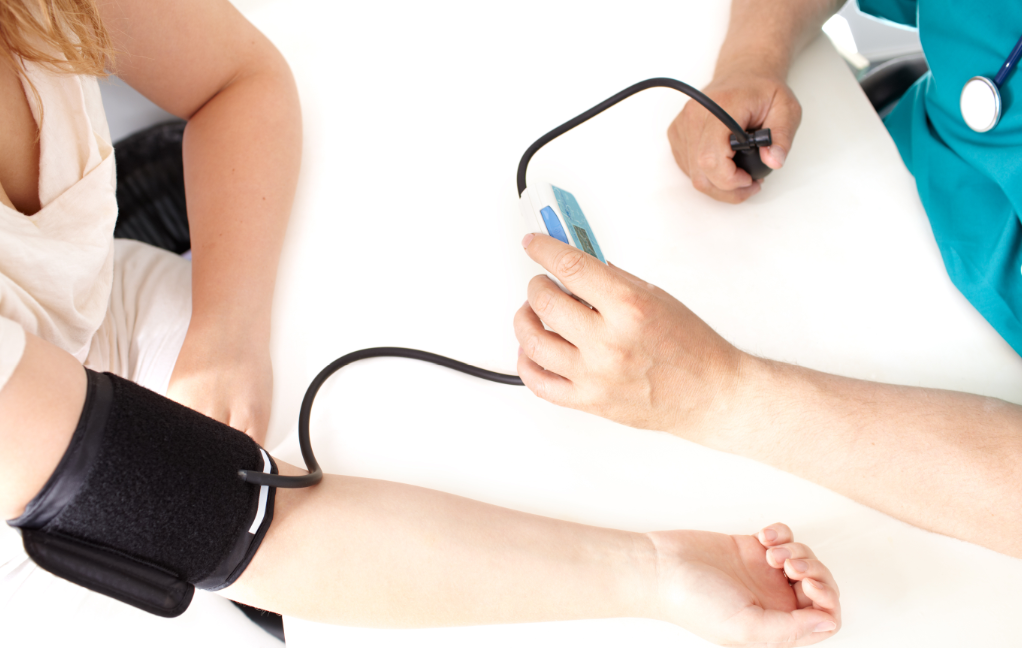What is Hypertension?
Blood pressure is the force exerted on artery walls from blood flowing through the body. Blood pressure readings provide two measures- systolic pressure and diastolic pressure (both expressed as millimeters of mercury, or mm Hg).

Hypertension is a term used for the condition known as high blood pressure. Hypertension is defined as a blood pressure higher than 140 (systolic) /90 (diastolic) mm Hg. Hypertension affects over 65 million Americans, and an additional 59 million Americans suffer with pre-hypertension, a blood pressure between 120/80 mm Hg (normal) and 140/89 mm Hg. Those with prehypertension are at an increased risk for developing high blood pressure.
Hypertension is harmful, because it causes your heart to work harder than needed and can cause plaque build-up in the arteries.
Over time, it can cause damage to blood vessel walls and may lead to heart disease, stroke, kidney disease, and blindness.
Though the risk of hypertension increases as one gets older, it can occur at any age. After the age of 55, the risk for developing this condition during one’s lifetime increases to 90 percent.
How the DASH Eating Plan Can Help Lower Blood Pressure
The foods that you eat can both affect your risk of developing hypertension and also help you manage or treat high blood pressure.
Hypertension can be related to an individual’s diet and is often times associated with a diet high in sodium (salt) and excess body fat. It is often treated with prescription medications; however, diet and lifestyle improvements can also significantly lower blood pressure. In particular, the DASH eating plan can reduce blood pressure as much or more than prescribed drugs. In fact, the DASH eating plan, along with sodium restriction (no more than 1,500 milligrams daily), can be highly effective in lowering blood pressure.
To control hypertension through your diet, follow these tips:
- Follow the DASH eating plan, which includes foods high in fiber, calcium, and potassium and low in sodium (salt), sugar, and saturated fat.
- Maintain a healthy weight.
- Avoid all tobacco products.
- Limit alcohol intake- no more than 2 drinks per day for men, and 1 drink per day for women.
- Engage in moderate physical activity for 30 minutes on most days.
Components of the DASH Eating Plan:
- Consume whole-grains for the added benefit of being high in fiber, and containing more vitamins and minerals when compared to refined grains.
- Increase fruit and vegetable consumption for a great source of fiber, potassium, and magnesium, and protect against high blood pressure.
- Choose fat-free or low-fat dairy products which are low in fat, while rich in calcium and protein.
- Select lean meats which are a great source of protein and magnesium.
- Include nuts, seeds, and legumes in your diet, which provide magnesium, potassium, protein, and fiber to the diet, as well as healthy unsaturated fats.
- Aim for approximately 27 percent of daily calories from healthy fats (omega-3, monounsaturated fats).
- Limit foods with added sugar such as desserts and sugary beverages.
- Follow a low sodium (salt) diet – no more than 1,500 milligram of sodium daily is recommended.
Did You Know?
Hypertension is known as the “silent killer” because it often lacks symptoms and can go undetected for years.
For the treatment of hypertension, the DASH eating plan can be a safer alternative to medication and cost less too!


